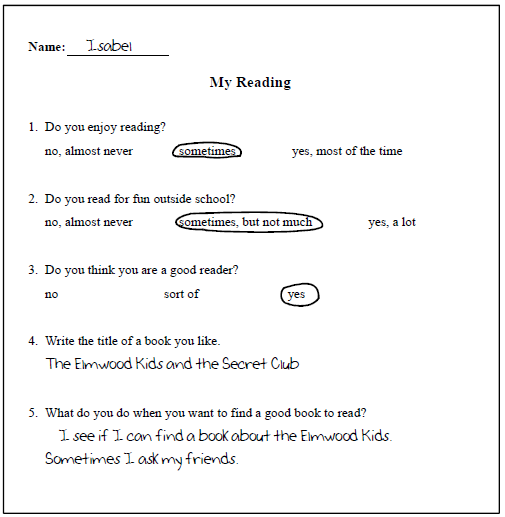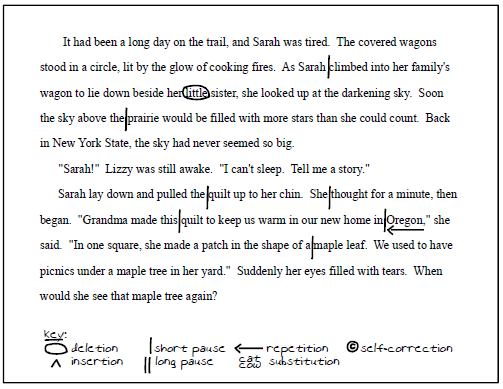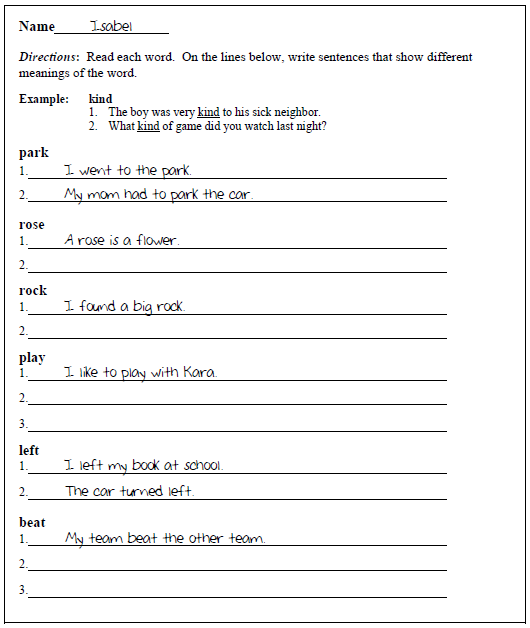Study Guide
Section 10: RICA Written Examination Subtest 3
Sample Case Study Assignment
Assignment Directions
This section of the test consists of one case study. Read the assignment carefully before you begin to write. Think about how you will organize your response.
Please note that symbols for long and short vowels are not available on the keyboard. If you need to refer to a long or short vowel, write out the description of the vowel (e.g., long a, short e).
Written responses will be evaluated based on the extent to which they demonstrate knowledge and skills important for effective delivery of a balanced, comprehensive reading program. Read each assignment carefully to ensure that you address all aspects of the assignment. Your responses to the assignments will be evaluated based on the following criteria:
Purpose: The candidate demonstrates an understanding of the relevant content and pedagogical knowledge by fulfilling the purpose of the assignment.
Application of Content: The candidate accurately and effectively applies the relevant content and pedagogical knowledge.
Support: The candidate supports the response with appropriate examples, evidence, and rationales based on the relevant content and pedagogical knowledge.
The approximate weight of the case study assignment toward the total examination score is 20%.
The assignment is intended to assess knowledge and skills of reading instruction, not writing ability. Your response, however, must be communicated clearly enough to permit a valid judgment of your knowledge and skills. Your response should be written for an audience of educators knowledgeable about reading instruction.
The final version of your response should conform to the conventions of edited American English. Your response should be your original work, written in your own words, and not copied or paraphrased from some other work. You may, however, use citations when appropriate.
You may start uppercase NOT end uppercase use any reference materials during the testing session.
Sample Case Study Assignment
This case study focuses on a student named Isabel, who is eight years old. Her primary language is English. The documents on the following pages describe Isabel's reading performance at the beginning of third grade. Using these materials, write a response in which you apply your knowledge of reading assessment and instruction to analyze this case study. Your response should include three parts:
- identify three of Isabel's important reading strengths and/or needs at this point in the school year, citing evidence from the documents to support your observations;
- describe two specific instructional strategies and/or activities designed to foster Isabel's literacy development for the remainder of the school year by addressing the needs and/or building on the strengths you identified; and
- explain how each strategy/activity you describe would promote Isabel's reading proficiency.
Reading Survey
Printed below are Isabel's responses to a survey of reading habits prepared by her teacher.

Survey is titled My Reading. Isabel wrote her name next to the word Name at the top. Question 1. Do you enjoy reading? Options. No, almost never. Sometimes. Yes, most of the time. Sometimes is circled. Question 2. Do you read for fun outside school? Options. No, almost never. Sometimes, but not much. Yes, a lot. Sometimes, but not much is circled. Question 3. Do you think you are a good reader? Options. No. Sort of. Yes. Yes is circled. Question 4. Write the title of a book you like. Isabel wrote: The Elmwood Kids and the Secret Club. Question 5. What do you do when you want to find a good book to read? Isabel wrote: I see if I can find a book about the Elmwood Kids. Sometimes I ask my friends.
Informal Reading Assessment
Printed below is an excerpt used for an informal assessment of Isabel's reading performance. For this assessment, Isabel read aloud the beginning of a selection from a third-grade reader. As Isabel read, the teacher made the following notes about her performance.

Key: A circle around a word represents omission. A single vertical line represents a short pause. A left-point arrow represents repetition. A small C inside a circle represents self-correction. An upward facing triangular point represents an insertion. A double vertical line represents a long pause. One word written above another represents substitution. First sentence. It had been a long day on the trail, and Sarah was tired. Next sentence. The covered wagons stood in a circle, lit by the glow of cooking fires. Next sentence. As Sarah climbed into her family’s wagon to lie down beside her little sister, she looked up at the darkening sky. Short pause after the word Sarah. Little is circled. Next sentence. Soon the sky above the prairie would be filled with more stars than she could count. Short pause between the and prairie. Next sentence. Back in New York State, the sky had never seemed so big. Next sentence. “Sarah!” Lizzy was still awake. Next sentence. Continued dialogue. “I can’t sleep. Tell me a story.” Next sentence. Sarah lay down and pulled the quilt up to her chin. Short pause between the and quilt. Next sentence. She thought for a minute, then began. Short pause between she and thought. Next sentence. “Grandma made this quilt to keep us warm in our new homes in Oregon,” she said. Short pause between this and quilt. Short pause between in and Oregon. Repetition symbol under Oregon. Next sentence. “In one square, she made a patch in the shape of a maple leaf. Short pause between a and maple. Next sentence. We used to have picnics under a maple tree in her yard.” Next sentence. Suddenly her eyes filled with tears. Next sentence. When would she see that maple tree again?
After Isabel's oral reading, she reread the passage silently, and then the teacher asked her some questions. Printed below is a transcript of part of their conversation.
Teacher: Where is Sarah's family from, and where are they going?
Isabel: I think they are from New York State, and they're going to Oregon.
Teacher: What can you tell me about Sarah?
Isabel: Um . . . she's a girl. She has a little sister.
Teacher: Why do Sarah's eyes fill with tears?
Isabel: Because she's tired. My mom says she can tell when my brother's really tired because he starts to cry at the littlest thing.
Teacher Notes
Printed below is an excerpt from the teacher's notes documenting informal observations related to Isabel's reading activities.
9/28 During independent reading Isabel fidgeted, played with her hair, yawned, looked around the room. Didn't distract others, but certainly wasn't engaged in her own reading.
10/15 Assessed students' oral reading fluency using another passage from the social studies textbook. Isabel's accuracy was 97% and rate was 70 wcpm* (less than 10 words below the fall 50th percentile benchmark of 71 wcpm). She didn't make many errors, but she slowed down to decode several high-frequency irregular words and a number of low-frequency multisyllabic words.
10/23 Conference today with Isabel's parents; asked them about her reading at home. They were a bit vague and apologetic: talked about being so busy that they often don't ask whether she's done the 20 minutes of daily at-home reading that all the children are supposed to do. Her father pointed out that he always checks to see if she's done her written homework, which he described as "the really important thing."
10/30 Most students chose their new independent reading books for the Rain Forest unit. Isabel is still only 3/4 of the way through her book for the Pioneer Life unit. Need to check in with her and help her work out a plan for finishing the book by the end of the week.
*NOTE: wcpm = words correct per minute
Written Response to a Text
Students in Isabel's class keep logs in which they write about the books they select for independent reading. For each entry the teacher provides a general question or short assignment to focus students' responses. Printed below is an excerpt from Isabel's reading log. The assignment was as follows: "Write a short summary of the book you read. Identify the main character and tell three things about him or her."
My book was The Elmwood Kids and the best Yard Sale Ever. I have read 6 other books about the Elmwood Kids. They are also on a T.V. show. This story was on T.V. once. In this story there is a family that has a fire at their house when they are away, and all their stuff burns up. So the Elmwood Kids have this huge yard sale. They make lots of money for the family. There are 6 main characters in the Elmwood Kids. They are also on the show. They are Sally, Mei-Ling, Pedro, Jamal, Tim, and Vimla. I like Vimla best. She is quiet, but she always has the best ideas. She has shiny black hair and dark eyes.
Printed below is an excerpt from a dialogue between Isabel and her teacher about this reading log entry.
Teacher: How did you happen to choose this book?
Isabel: Well, I just like the Elmwood Kids. I always watch them on TV, every week. I also have almost all of the collector figures of them. The only one I still have to get is Jamal—oh, and Pedro's mom.
Teacher: If a friend asked you why you liked this book, what would you say?
Isabel: Well, it's really good because it's just like the TV show.
Teacher: Is there anything in the book that wasn't in the TV show?
Isabel: Oh… maybe some little parts, like when they get the rocking horse for the sale. But mostly it's like the show, and the kids are just the same. Like I said, Vimla always has good ideas. And Tim always is good with animals. It's nice because I always know what the kids are going to be like, even if I don't know everything that's going to happen in the story.
Informal Skill Assessment
Printed below are Isabel's responses to a worksheet designed to measure students' understanding of multiple-meaning words.

A worksheet that has been filled in. First, the worksheet asks for the name of the student. Isabel has written her name down. Next, the directions: Read each word. On the numbered lines below, write sentences that show different meanings of the word. Next, an example is provided. The example lists the word "kind," and two numbered lines underneath. The first sentence is "The boy was very kind to his sick neighbor." The word "kind" is underlined. The second sentence is "What kind of game did you watch last night?" The word "kind" is underlined. Next, the worsheet lists the word "park," with two numbered lines underneath. Isabel has filled in both of them. The first senctence is "I went to the park." The second sentence is "My mom had to park the car." Next, the worsheet lists the word "rose," with two numbered lines underneath. Isabel has filled in the first line. The sentence is "A rose is a flower." Next, the worsheet lists the word "rock," with two numbered lines underneath. Isabel has filled in the first line. The sentence is "I found a big rock." Next, the worsheet lists the word "play," with three numbered lines underneath. Isabel has filled in the first line. The sentence is "I like to play with Kara." Next, the worsheet lists the word "left," with two numbered lines underneath. Isabel has filled in both of them. The first senctence is "I left my book at school." The second sentence is "The car turned left." Next, the worsheet lists the word "beat," with three numbered lines underneath. Isabel has filled in the first line. The sentence is "My team beat the other team."
Sample Response
Isabel's most important reading strength is that she appears to be a good decoder, as indicated by her performance on the Informal Reading Assessment (IRA) and the oral reading fluency (ORF) assessment, which was mentioned in the Teacher Notes. She accurately decoded all the words in the IRA, making only one minor deletion, and her accuracy on the ORF was 97%. She made short pauses on both assessments before high-frequency irregular words (e.g., thought) and low-frequency words (e.g., quilt, climbed, prairie, Oregon); however, her oral reading rate of 70 wcpm suggests that her fluency (at least in terms of accuracy and rate), is not an issue at this time.
Isabel's lack of understanding of Sarah's sadness suggests a weakness in inferential comprehension. While she demonstrates good literal recall (e.g., Sarah's family came from New York and was going to Oregon, Sarah had a little sister, Sarah was tired), Isabel needs to consider details more carefully so that she can better understand why characters in stories behave and think as they do. On her reading survey, she indicated that she "sometimes" enjoys reading and that she doesn't often read for fun. This may be because she is not inferring much meaning.
Isabel also needs to increase her vocabulary and understanding of multiple-meaning words. She was able to think of an additional meaning for only two of six words on the informal skill assessment. A general weakness in vocabulary knowledge could be another factor contributing to her minimal enjoyment in reading, which has led to the limited amount and breadth of her independent reading. Unfortunately, if her independent reading continues to be so limited, this will only continue to inhibit her vocabulary growth.
One instructional strategy to improve Isabel's comprehension would be to teach her to use information from the text to better understand character motives. I would teach her to refer to the text for details to analyze a character's actions and to better understand their motives and feelings. For example, when Isabel bases her inference about why Sarah's crying on a personal experience (Isabel's brother cries when he's tired) rather than on something she read in the story, I would urge her to go back to the text to look for evidence and, if necessary, I'd direct her to the lines in which Sarah talks about the picnics under the maple with her grandma and wonders if she'll ever see that tree again. By teaching Isabel to refer to the text to find support for her answers, I would be developing her inferential comprehension skills. She would learn to base inferences on evidence from the text.
A second strategy would be to help Isabel increase her understanding of vocabulary, focusing first on words with multiple meanings. Beginning with the words that Isabel had difficulty with on the Informal Skill Assessment (i.e., rose, rock, play, and beat), I would show her sentences that illustrated other meanings of each word (e.g., The man start underline beat end underline the rug with a stick. start underline Beat end underline it! I start underline beat end underline two eggs into the cake batter.). I'd have her read the sentences and determine the word's meaning in each sentence. After analyzing a given sentence, I'd ask her to think of her own sentence that used the word in the same way. These activities would expand Isabel's vocabulary knowledge, which would increase her comprehension of text.
Evaluation of Sample Response
This assignment assesses content related to the five domains of the RICA Content Specifications. The response fulfills the purpose of the assignment by identifying one of Isabel's reading strengths (i.e., decoding accuracy) and two reading needs (i.e., inferential comprehension and vocabulary), discussing two strategies that should enhance Isabel's literacy development in light of her current performance (i.e., instruction in inferential comprehension and understanding multiple-meaning words), and explaining how these strategies can be expected to benefit Isabel. The writer accurately interprets Isabel's performance (as indicated in various case study documents) and demonstrates a solid grasp of current reading pedagogy by describing instructional strategies that are likely to improve Isabel's reading skills. Strong supporting evidence is found in the response's inclusion of accurate and appropriate details and explanations and in the inclusion of an accurate rationale explaining the probable benefits of each of the two strategies described.
Performance Characteristics
Responses to the open-ended assignments are evaluated based on the following criteria. The case study is rated on a four-point scale.
| Purpose | The candidate demonstrates an understanding of the relevant content and pedagogical knowledge by fulfilling the purpose of the assignment. |
|---|---|
| Application of Content | The candidate accurately and effectively applies the relevant content and pedagogical knowledge. |
| Support | The candidate supports the response with appropriate examples, evidence, and rationales based on the relevant content and pedagogical knowledge. |
Scoring Scale: Case Study
| Score Point | Score Point Description |
|---|---|
| 4 |
The "4" response reflects a thorough understanding of the relevant content and pedagogical knowledge from the applicable RICA domains.
|
| 3 |
The "3" response reflects an adequate understanding of the relevant content and pedagogical knowledge from the applicable RICA domains.
|
| 2 |
The "2" response reflects a limited understanding of the relevant content and pedagogical knowledge from the applicable RICA domains.
|
| 1 |
The "1" response reflects little or no understanding of the relevant content and pedagogical knowledge from the applicable RICA domains.
|
Return to Navigation